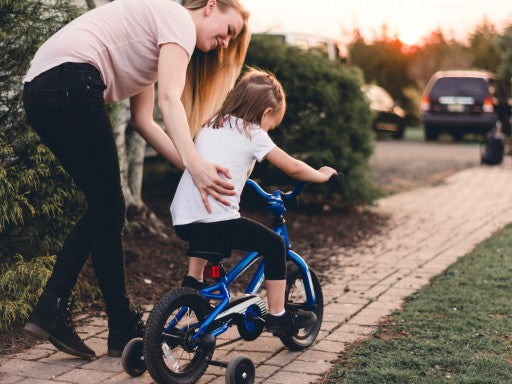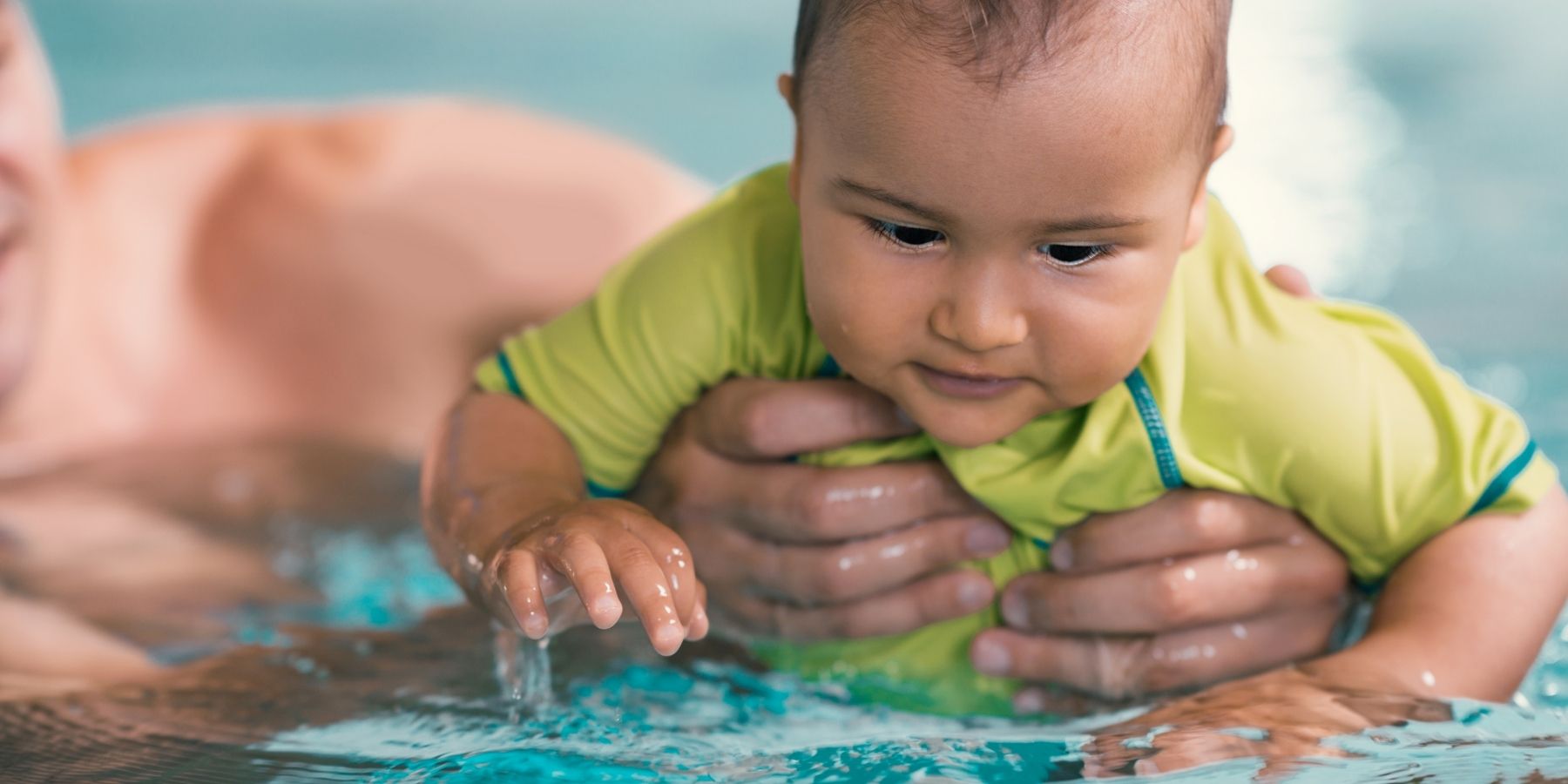
Proper and Safe Sleep
You know you’re a parent when you are sleep deprived not only from the frequent feedings a newborn requires, but also when you’re up worrying about Every. Little. Thing. Like when your newborn gets that first long stretch of sleep at night and you jump to put your finger under their little nose or put your hand on their chest.
One way to take that worry away (more like making it less so cause it never really goes away) is to practice safe sleep. When you know your little one is sleeping safely based on guidelines from the American Academy of Pediatrics (AAP), then maybe you too can sleep a little more comfortably.
The safe sleep initiative that was set in place in 1994 (aka the Safe Sleep Campaign or the Back to Sleep Campaign) has been paramount in reducing the risk of SIDS (Sudden Infant Death Syndrome). About 3,500 infants die of sleep-related SIDS in the U.S. In 2016 the AAP updated their safe sleep statement on how to help reduce the risk of SIDS.
Included in the list was continuing to place babies on the back for every sleep - never on the stomach or side. Babies should sleep on a firm, flat surface with no loose bedding, pillows, or toys. This includes not using positioners for sleep. Other factors that help to reduce the risk include, breastfeeding, immunizing on schedule, and getting regular prenatal care all reduce the risk, as does avoiding exposure to cigarettes, alcohol, and drugs in pregnancy and after birth. You can check out the full list here.
An easy way to remember the basics of safe sleep is remembering your ABCs:
In addition to this breakdown for proper and safe sleep, since the mid-1990s research continues to indicate that room-sharing is also a protective factor of SIDS and is recommended by the AAP. Researchers actually don’t know why room sharing is a protective factor, but it’s a strong and consistent effect. The ongoing hypothesis is that babies sleeping in close proximity to parents have more of a sensory exchange (e.g., noises, scents, or touches from checking on baby) and as a result stay in a lighter sleep with more short arousals that protect them from SIDS.
Having a set up next to your bed is key to ensuring safe sleep. If you fall asleep while feeding overnight, it’s important to move your baby to a safe sleep location as soon as you wake up. Putting your little one in a sleep positioner in your bed does not make bedsharing safe.
Setups like joovy’s Premium Room all-in-on play yard that’s used as a whole system with an adjustable bassinet, a built-in changing table, great diaper/wipes storage, and playpen/crib is a great option to maintain proper and safe sleep. I loved mine and even took it on local travel. And don’t forget that it’s a great option to have at grandparents’ house for when you’re visiting too!
For those other occasions where you traveling, going camping, or even going to the beach and wondering how and where can you put your newborn down for safe sleep, Joovy’s Gloo portable travel tent is another great option. It’s so lightweight and easy to travel with – just throw it over your shoulder and go! And you’ll have peace of mind knowing you have safe sleeping space for your baby no matter where you are headed.
One way to take that worry away (more like making it less so cause it never really goes away) is to practice safe sleep. When you know your little one is sleeping safely based on guidelines from the American Academy of Pediatrics (AAP), then maybe you too can sleep a little more comfortably.
The safe sleep initiative that was set in place in 1994 (aka the Safe Sleep Campaign or the Back to Sleep Campaign) has been paramount in reducing the risk of SIDS (Sudden Infant Death Syndrome). About 3,500 infants die of sleep-related SIDS in the U.S. In 2016 the AAP updated their safe sleep statement on how to help reduce the risk of SIDS.
Included in the list was continuing to place babies on the back for every sleep - never on the stomach or side. Babies should sleep on a firm, flat surface with no loose bedding, pillows, or toys. This includes not using positioners for sleep. Other factors that help to reduce the risk include, breastfeeding, immunizing on schedule, and getting regular prenatal care all reduce the risk, as does avoiding exposure to cigarettes, alcohol, and drugs in pregnancy and after birth. You can check out the full list here.
An easy way to remember the basics of safe sleep is remembering your ABCs:
A: Babies should sleep Alone.
The baby’s sleeping space should be free from any blankets, stuffed animals, pillows, or lovies. The only things in the sleep space should be your baby, a fitted sheet on the mattress, and a pacifier if one is taken. And of course, if your baby is swaddled or in a sleep sack, that’s a-ok. But if your baby continues to break out of the swaddle, it’s time to get rid of it.B: Babies should sleep on their backs
Always place your baby down on their back for sleep. A baby can safely sleep on their stomach once they are able to independently roll to their tummy and return to their back. Even when your baby has mastered rolling, still place them down for sleep initially on their back – it’s ok if they roll from there.C: Babies should sleep in a Crib or bassinet/pack-n-play
This means no sleeping in swings, bouncy seats, Dock A Tots, positioners, lounges, couches, poppies, chairs. A flat and firm mattress is what your little one needs for safe sleep. Even if your baby has reflux, the AAP states that putting a wedge beneath the mattress to make an incline is not safe. If you are unsure if something is safe for your baby to sleep in, ask yourself “Is it flat? Is it firm? Does it have 4 sides? And of course, always look for the Consumer Product Safety Commission (CPSC) seal of approval.In addition to this breakdown for proper and safe sleep, since the mid-1990s research continues to indicate that room-sharing is also a protective factor of SIDS and is recommended by the AAP. Researchers actually don’t know why room sharing is a protective factor, but it’s a strong and consistent effect. The ongoing hypothesis is that babies sleeping in close proximity to parents have more of a sensory exchange (e.g., noises, scents, or touches from checking on baby) and as a result stay in a lighter sleep with more short arousals that protect them from SIDS.
Having a set up next to your bed is key to ensuring safe sleep. If you fall asleep while feeding overnight, it’s important to move your baby to a safe sleep location as soon as you wake up. Putting your little one in a sleep positioner in your bed does not make bedsharing safe.
Setups like joovy’s Premium Room all-in-on play yard that’s used as a whole system with an adjustable bassinet, a built-in changing table, great diaper/wipes storage, and playpen/crib is a great option to maintain proper and safe sleep. I loved mine and even took it on local travel. And don’t forget that it’s a great option to have at grandparents’ house for when you’re visiting too!
For those other occasions where you traveling, going camping, or even going to the beach and wondering how and where can you put your newborn down for safe sleep, Joovy’s Gloo portable travel tent is another great option. It’s so lightweight and easy to travel with – just throw it over your shoulder and go! And you’ll have peace of mind knowing you have safe sleeping space for your baby no matter where you are headed.


